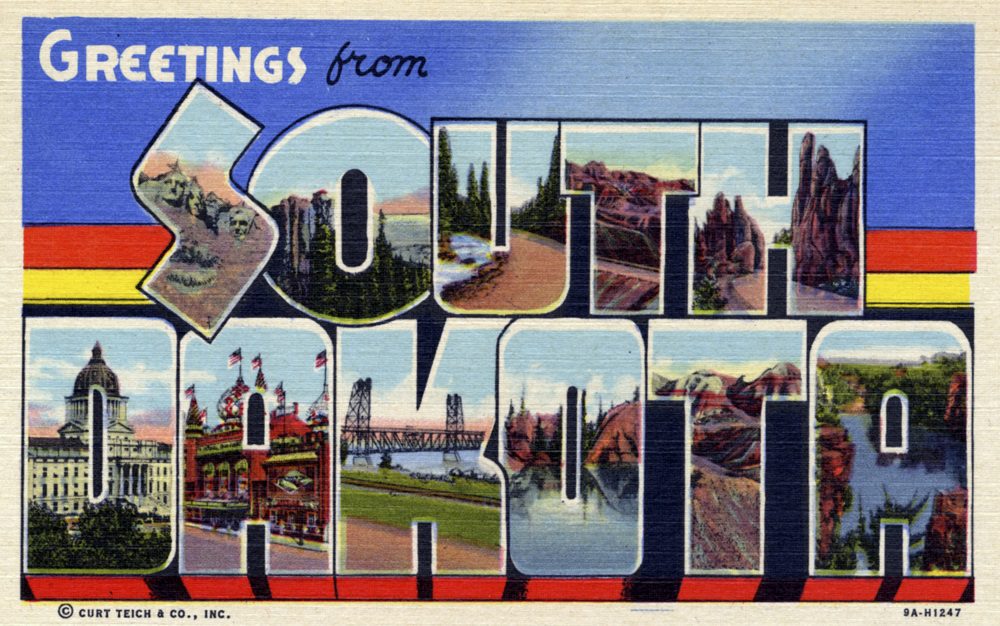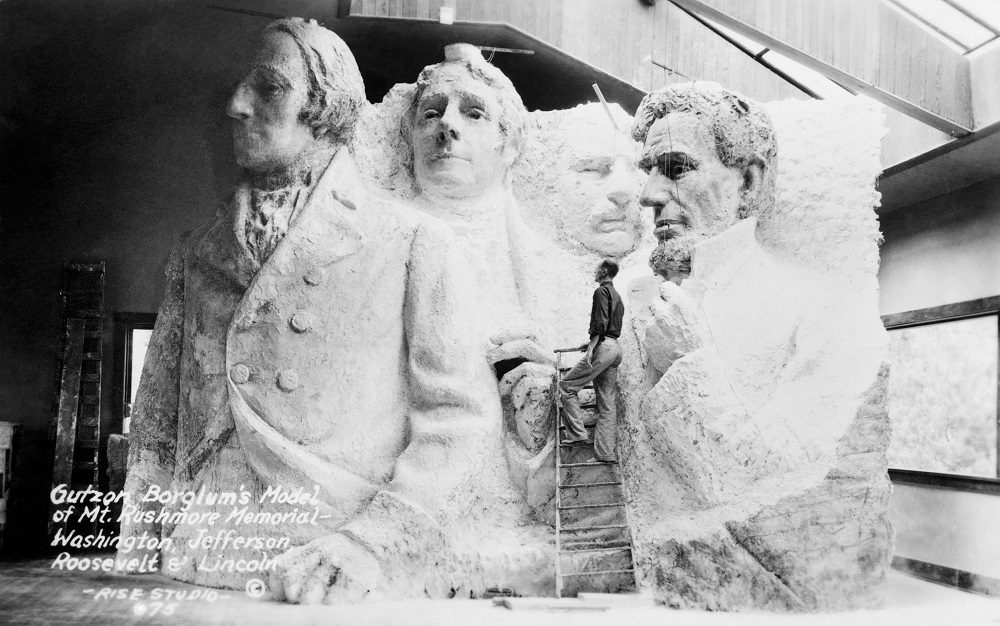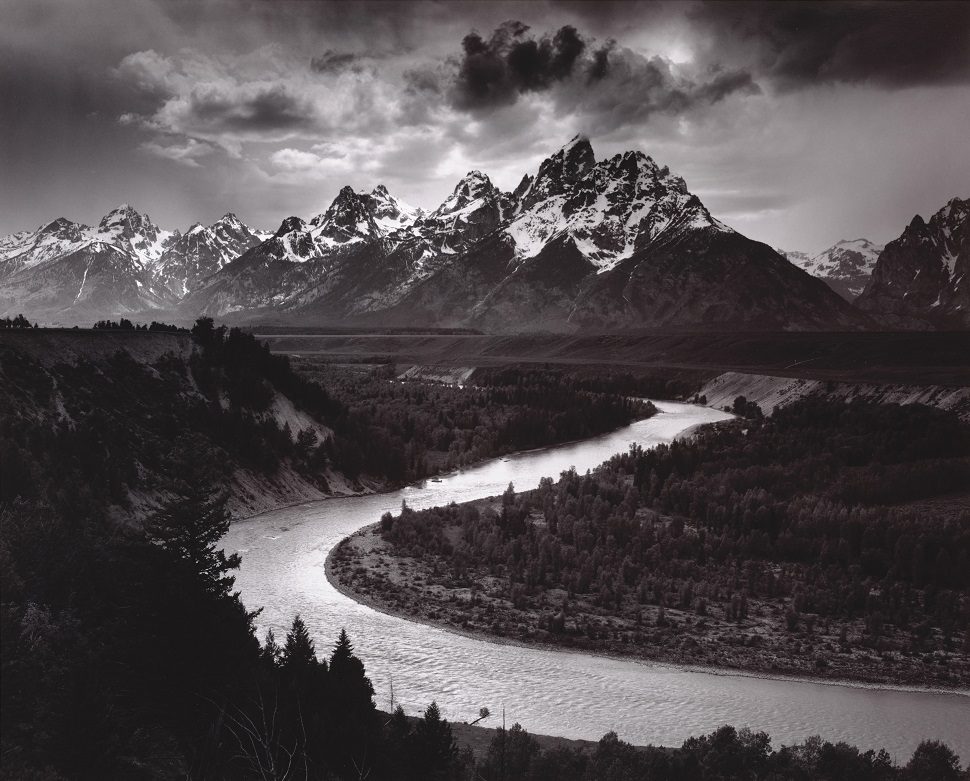
In anticipation of the November 2024 elections and the nomination of the next president of the United States of America, we offer a brief insight into Mount Rushmore. The faces of George Washington, Thomas Jefferson, Theodore Roosevelt, and Abraham Lincoln will accompany us in our discovery of this iconic U.S. monument, a symbol of the country’s history and identity.
The Mount Rushmore Memorial is 56 meters wide. Each head measures about 18 feet high. The nose of each president measures about 20 feet long, while the mouth is about 5.5 feet wide.
Its construction took 14 years, from 1927 to 1941, with more than 400 workers, mostly miners.
410,000 tons of rock were literally blasted from the mountainside. 90% of this figure was the material blasted from Mount Rushmore to outline the faces of the four presidents depicted. The remaining 10% of these 410,000 tons of granite was removed by hand by stonemasons with precision tools.
The construction of the monument totalled zero work-related deaths, an amazing record even by today’s standards and especially considering the conditions at the time and the absence of safety regulations.
In total, the entire project cost $989,992.32 (equivalent to $17.4 million in 2020). The project was financed partly by the federal government and state funds, and partly by private donations. During the Great Depression, funding fell through, and the monument’s construction was halted. Today Mount Rushmore attracts about two million visitors each year.
Mount Rushmore is located in the Black Hills of South Dakota, an area of great historical and cultural significance to the region. In fact, the Black Hills were at the centre of a dispute between Native Americans (Lakota tribe) and the U.S. government. Making a massive monument in a frontier area was a clear assertion of power, including cultural power, by the government.
The 6th largest national park in the United States, Wind Cave National Park, had already been established in 1903 and shared a similar goal. This park transformed 1920s South Dakota into a tourist area. In fact, tourists could travel, first by wagon then by automobile, along the scenic route of the Needles Highway which wound around the Black Hills.

Historian Doane Robinson, a member of the South Dakota State Historical Society, was the originator of the monument. In August 1924, he contacted sculptor Gutzon Borglum who was currently engaged in the creation of Stone Mountain in Georgia. It was Borglum who chose Mount Rushmore as the mountain to be sculpted. From then on Robinson worked diligently to secure funding for the project.
The elevated location made the monument visible from great distances and increased both its visual and symbolic impact. Nonetheless its location allowed relatively easy access for workers and transportation of materials needed, including tons of dynamite.
Last but not least, and interesting to note, is the geological aspect: the granite of Mount Rushmore is particularly resistant to weathering, ensuring that the sculptures will be preserved for centuries without significant damage from rain, wind or frost.
Mount Rushmore is known today throughout the world as a symbol of the United States of America. At the time it was sculptor Borglum who insisted that the portraits be dedicated to the presidents who had contributed the most to the country’s expansion, a testament to what some have called “American exceptionalism.”
Under this perspective every president carved in the mountain is symbolic:
George Washington (1732-1799) represents the birth of the nation;
Thomas Jefferson (1743-1826) symbolizes the westward expansion with the purchase of the Louisiana territory;
Theodore Roosevelt (1859-1919) embodies economic development, thanks in part to his instrumental role in building the Panama Canal;
Abraham Lincoln (1809-1865) stands as a symbol of unity, as he managed to preserve the Federate States united despite the struggles of the American Civil War.
A curiosity about portraits of presidents regards George Washinton’s nose. If you compare any portrait or engraving depicting the first President of the United States with his profile on Mount Rushmore, you will notice that on the latter the nose is much larger. Borglum, in fact, added as much as two feet to George Washington’s nose, and justified the proportions with this sentence “What is three and a half feet on a nose for a face that is twenty feet tall?”

When Robinson began promoting the idea of a monument at Mount Rushmore he had in mind an ode to the heroes of the Old West, with sculptures of figures such as Lewis and Clark, Indian chiefs Red Cloud and Crazy Horse, and Buffalo Bill Cody. It was under the leadership of sculptor Gutzon Borglum, however, that the enterprise moved toward a monument designed to promote the presidents of the United States as symbols of national unity.
Originally the large heads we see today were intended to be on top of their busts. However, the project took such a large time and such an expenditure of financial resources that after the sculptor’s death in 1941 it was decided not to complete the Monument, or rather, to unveil it with only the heads and skip the busts.
During the creation the project was hit by some unforeseen setbacks; not only of economic nature such as the previously mentioned Great Depression but also of more physical nature. The portrait of Thomas Jefferson, in fact, was moved from its originally planned and sketched position to the right of Washington because of rock instability.
Along with the busts of the presidents the sculptor Borglum had planned to add also some text. He had planned panels with gilded letters dedicated to the following: the Louisiana Purchase of Territories, the Alaska and Panama Canal Territories, the Declaration of Independence and the Constitution.
However, lack of funds required the sculptor to change his plans and the Hall of Records, a room in the heart of Mount Rushmore that would hold American history in the form of documents and historical texts pertaining to the United States of America, was created. Unfortunately, this room was only sketched out and remains incomplete and not accessible. The room, located behind Lincoln’s head where there was a natural canyon, would have been reached by an 800-foot-high staircase.
The monument and surrounding area are part of the Mount Rushmore National Memorial and are managed by the U.S. National Park Service. Each year they attract two million visitors circa. The United States of America was the first country in the world to consider the natural beauty of our planet as equally important as artistic cultural heritage. The first bill to establish a national park, Yellowstone, was signed by President Ulysses S. Grant in 1872. Today there are 63 national parks in the United States.

If you would like to learn more about America’s National Parks through fine art photography, we suggest you look at this lightbox featuring images shot by Ansel Adams, a master photographer of the 20th century who devoted much of his career to photographing landscapes and publicizing the extraordinary beauty and importance of nature.
Scala Archives is pleased to represent Ansel Adams Trust. Contact us for licensing and copyright information about Ansel Adams.
***
In the cover: United States. Mount Rushmore National Memorial – Y008827